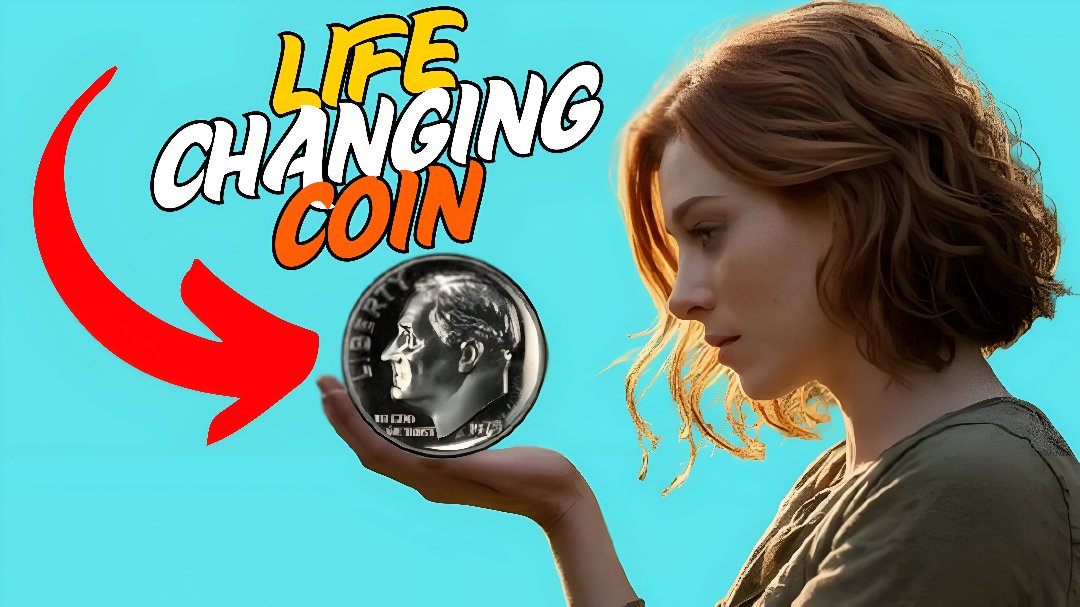Roosevelt Dime : A dime typically carries a value of just ten cents, but one specific Roosevelt dime recently discovered in everyday circulation has been valued at an astonishing $2.8 million. This unexpected windfall has shocked both seasoned collectors and average Americans, showing that even the smallest coins can hide unimaginable value. Now, collectors and curious citizens alike are racing to examine their spare change in hopes of striking it rich.
What Is a Roosevelt Dime?
The Roosevelt dime was first introduced in 1946, shortly after the death of President Franklin D. Roosevelt. It replaced the Mercury dime and was intended to honor Roosevelt’s legacy, especially his fight against polio. These dimes have been in continuous production since, making them one of the most common coins in U.S. currency. But while most are worth only their face value, a few extremely rare examples have fetched thousands—or even millions—on the collector’s market.
Why Is This Particular Dime Worth $2.8 Million?
This multi-million-dollar Roosevelt dime wasn’t valuable just because of its age. Instead, it was a rare minting error or prototype test coin, possibly struck in an experimental metal or released in error during production. It also remained in pristine, uncirculated condition, making it even more appealing to collectors. The exact nature of the flaw and its incredible state of preservation are what drove the value up into the millions. Only a handful of such coins are believed to exist.
How It Was Discovered in Everyday Change
The incredible part of this story is that the $2.8 million dime was found in ordinary circulation. The person who discovered it reportedly received it as change after a routine purchase, never suspecting they were holding a fortune in their hand. This highlights just how easily such valuable coins can be overlooked—and why it’s worth checking your change more carefully than ever before.
Could There Be More Like It Still in Circulation?
Experts believe there could be more rare Roosevelt dimes still in circulation, especially if they were accidentally released in small quantities or overlooked during mint inspections. Because these rare versions are visually similar to standard coins, they often go unnoticed. This raises the exciting possibility that other high-value dimes could be sitting in drawers, vending machines, or change jars across the country.
How to Spot a Rare Roosevelt Dime
Collectors recommend checking for unusual dates, mint marks, or metallic tones. For example, a 1964 Roosevelt dime struck on a silver planchet may be common, but one with a minting anomaly—such as missing ridges or wrong metal—could be worth a fortune. A coin that doesn’t match the appearance or weight of typical dimes should be inspected professionally. And remember: never clean a coin before getting it appraised, as doing so can ruin its value.
The Role of Authentication and Professional Grading
If you believe you’ve found a valuable dime, your next step should be to have it evaluated by a professional grading service like PCGS (Professional Coin Grading Service) or NGC (Numismatic Guaranty Corporation). These organizations can confirm the coin’s authenticity, rarity, and condition. Without authentication, even a rare find may not fetch its full market value. Certified coins are more trusted and often bring higher prices at auction.
Conclusion: Why Every Dime Deserves a Second Look
This remarkable story is more than just a collector’s dream—it’s a reminder that treasure can hide in plain sight. The discovery of a $2.8 million Roosevelt dime in everyday change has renewed excitement around coin collecting and encouraged countless people to check their pockets, purses, and piggy banks. Whether or not you find a rare dime, you’ll never look at small change the same way again.
Frequently Asked Questions (FAQs)
Q1: What year is the $2.8 million Roosevelt dime?
The exact year has not been publicly disclosed, but it’s believed to be from a minting year with known error or prototype runs—possibly from the 1960s or 1970s.
Q2: What kind of minting error makes a dime valuable?
Errors may include wrong metal planchets, off-center strikes, missing ridges, or prototype dies. These rare issues drastically increase a coin’s value.
Q3: Can I still find a rare Roosevelt dime in my change?
Yes. While extremely rare, similar coins have been found in everyday circulation by unsuspecting individuals.
Q4: How do I check if my Roosevelt dime is valuable?
Start by comparing the date, mint mark, and metal with standard examples. If anything seems off, contact a coin grading service for authentication.
Q5: Should I clean my coin before getting it graded?
No. Cleaning a coin can damage its surface and significantly lower its value. Always preserve its original condition.




